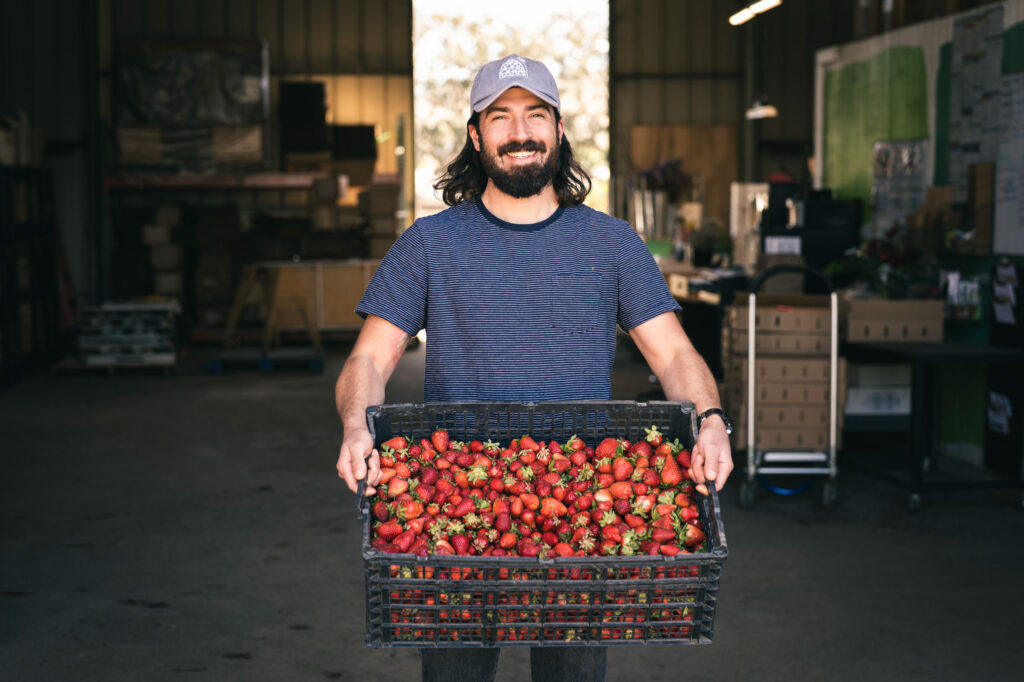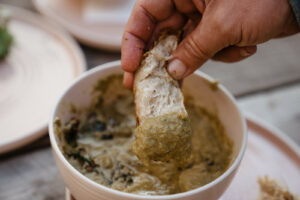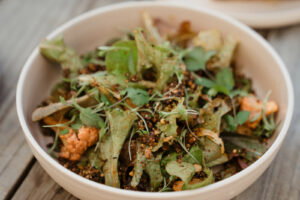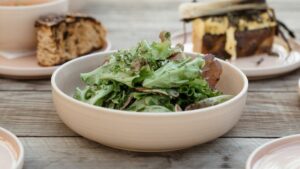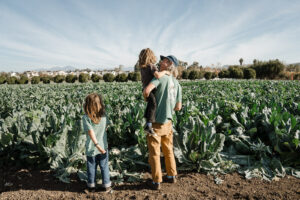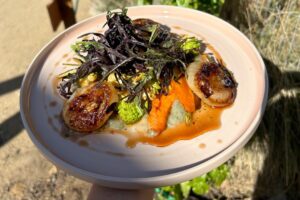When you think of high season on the farm, what comes to mind? Maybe you think of springtime strawberries overflowing our harvest baskets, bumper crops of zucchini and tomatoes destined for hot summer salsa, or tall rows of cornstalks rattling in the autumn wind.
It’s true that the warm seasons bring an explosion of living color in our farm fields. But what you see in the fields is just the beginning. As field production winds down into the stillness of winter, our food preservation program is revving up to turn our surplus into delicious artisanal products: pickles, jams, vinegars, and so much more.
Like so much of our farm model, our food preservation program is derived from what our founder Evan Marks experienced at Camp Joy, the legendary farm where he trained in regenerative agriculture. Throughout the year, the Camp Joy kitchen was busy with windfall fruit preserves bubbling on the stove, pickles brining on the windowsill, chiles and cut flowers drying in the rafters. Along with ensuring that nothing went to waste, this work was a powerful venue for knowledge exchange. The kitchen was a place for farmers and food artisans to come together, sharing their expertise, refining their craft, and learning more about the fruit or vegetable at the center of it all.
Jon Barnhill, our Farm Hub Manager, explains it this way: “An idea that’s kind of caught hold here, between Farm Hub and Culinary, is a hierarchy of best uses. There’s a solution for every stage of that product’s life cycle. The premium product goes to Farm Stand to tell a story about the season; the seconds, which go to our value-added program, tell a story about the product itself.” Each value-added product not only preserves the flavors and nutrients of the past season, but also helps develop deeper flavors, more powerful nutrition, that help us see that fruit or vegetable in a whole new way.

As our farm has grown, so has our food preservation program. We see both efforts as crucial in transforming our food culture with a “give more than you take” ethos. It’s also an important way to sustain the growth of our mission to transform the food system. In addition to contributing less food to landfills, our preservation program also allows us to support our local economy by employing artisans whose traditional knowledge gives these “unwanted” foods a second life. “Before, if a product lost value, it went straight to the compost,” says Jon. “There was no in- between. Now we can say ‘If this person can’t use it, who else can?’ and go find that relationship and build it.”
Our food preservation program has led us to collect our neighbor farms’ seconds—a nice-sounding name for the produce that supermarkets consider too “ugly” to put on the shelves—and transform them into delicious products that bring the best of each season to the table, all year long. As the program grows, it brings greater opportunity to nourish our community. “We’ve been reaching out to food pantries to potentially let them purchase our value-added products at a discount,” says Jon. “It strikes a balance where we’re still making back our costs while making sure nothing goes to waste.”
Speaking of delicious, we’ve also found that food preservation is a great way for Farm Stand customers to expand their palate, increase their nutrition, and even try foods that used to be off-limits. Preserved, fermented, and cultured foods are full of live organisms that “pre-digest” the food, making it easier for your body to absorb the nutrition. From the sweet summery crush of late-season berries in our Strawberry Jam to the fizzy tang of our pickles, from the earthy bite of roasted specialty chiles to the grounding serenity of dried herbs and flowers that compose our hand-blended teas, this is deep nourishment at its finest.
“I like to think of the food we grow as art supplies,” says Jon. “By putting it all together in different ways, we can paint a new picture with every season.”


